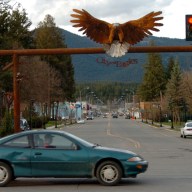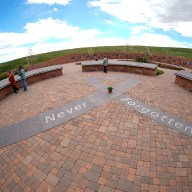 Alejandro Jodorowsky discusses his failed attempt to film Frank Herbert’s novel in “Jodorowsky’s Dune.”
Alejandro Jodorowsky discusses his failed attempt to film Frank Herbert’s novel in “Jodorowsky’s Dune.”
Credit: Sony Pictures Classics
‘Jodorowsky’s Dune’
Director: Frank Pavich
Genre: Documentary
Rating: PG-13
3 (out of 5) Globes
“Jodorowsky’s Dune” is more conduit than movie. It’s a documentary about one of the greatest films never made: Alejandro Jodorowsky’s gloriously aborted attempt in the mid-’70s to make a big, splashy, star-studded and probably at least 10 hour long film out of Frank Herbert’s “Dune.” It is not a work of art itself, though it is very good. And it’s kind of a tease. Watching it, one wants the right money people — the ones with a thing for the transgressive, druggy and messed-up — to see it and make another movie happen, one that actually depicts, to the extent that one can, Jodorowsky’s “Dune.”
The name Jodorowsky remains obscure, and for good reason: For much of his life his work has been plagued by rights issues, available only on bootleg. Born in Chile, he emigrated to Mexico, where he spent the ’60s cranking out comics, plays and eventually films. His 1970 acid western (a limiting term) “El Topo” became the first midnight movie. His follow-up, bankrolled by fans John Lennon and Yoko Ono, was like an acid cinemascope Technicolor musical without the numbers (and more mutilation and nudity).
“Dune” was to be his storm for the mainstream, minus the concessions to purported mainstream tastes. Jodorowsky freely adapted Herbert’s novel — one of the most dense in sci-fi, although he hadn’t read it before he decided to tackle it. (He only heard from a friend it was good.) It never got past exec pitch rooms, but by then it had already burned through a few million dollars. Jodorowsky set off to amass his “Ocean’s 11” team of what he calls “warriors.” These included Jean Giraud, aka the cartoonist Moebius, and H.R. Giger. Mick Jagger was signed to play villainous stud Feyd, Orson Welles floating fattie the Baron Harkonen (andpaid in meals from his favorite chef)) and Salvador Dali the Emperor, for which he demanded $100,000 an hour. Parts of the score would be done by Pink Floyd.
The project’s collapse would derail Jodorowsky’s film career; before last year, when he appeared at Cannes with “The Dance of Reality,” he’d only made three subsequent films — two horrible (and disowned), one (1989’s “Santa Sangre”) another masterwork. On screen, he’s an unstoppably exuberant 85, still spitting out sentences through a childlike smile. This is a talking heads and images type documentary, but the real Jodorowsky, even just talking, is as dynamic as any image.
 H.R. Giger’s designs including depictions of what the Harkonens’ planet looked like.
H.R. Giger’s designs including depictions of what the Harkonens’ planet looked like.
Credit: Sony Pictures Classics
Of course, Pavich doesn’t have much imagery to cut to; no film was ever shot. But he has storyboards. Before their failed Hollywood campaign, Jodorowsky and Girard painstakingly prepared a doorstop filled with every shot, and sent it to every Hollywood studio. The images, sometimes animated, fill the screen, but only at times. The tome is dangled, sadistically, in front of the viewer. You want to grab it, flip through it, see what crazy images Herbert inspired in Jodorowsky’s uncommonly febrile imagination. Pavich wrangles director Nicolas Winding Refn to rhapsodize about a night he spent at Jodorowsky’s Paris apartment, where he talked him, excitedly, through every page. (He then stares into the camera, and says, “And it was awesome.”)
As such, the ideal movie about Jodorwsky’s “Dune” would, in fact, be the movie itself, in some form. Pavich and his chronicler that the film did get made, if you think about it: Giger (and cowriter Dan Bannon) brought some of its elements to “Alien.” Bits of it can be spotted in “Star Wars,” “Blade Runner,” “Contact,” even the 1987 “Masters of the Universe” — and of course, in 1984’s notorious (though underrated) “Dune,” directed by David Lynch with an impossible burden on his shoulders.
But that’s not enough. “Jodorowsky’s Dune” is, in a sense, activist filmmaking, trying to resurrect this film, even as an animated project, or at least get the storyboard book published. (It’s already bound! It’s just sitting there!) Failing that it could at least speed up the resurrection of Jodorowsky himself. After watching his work buried for three decades, he’s only now — thanks to new fans Kanye West and St. Vincent — starting to re-invade the culture in more direct, not just passive ways. It’s long overdue.
Follow Matt Prigge on Twitter @mattprigge
















